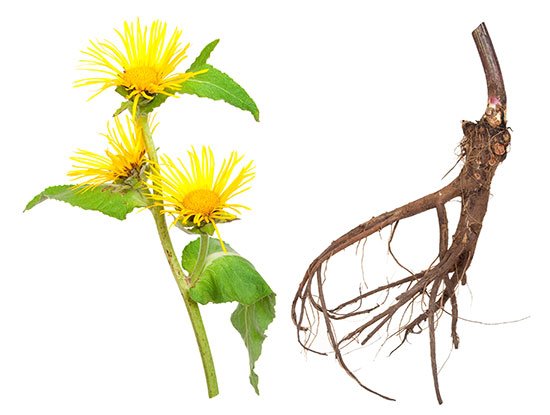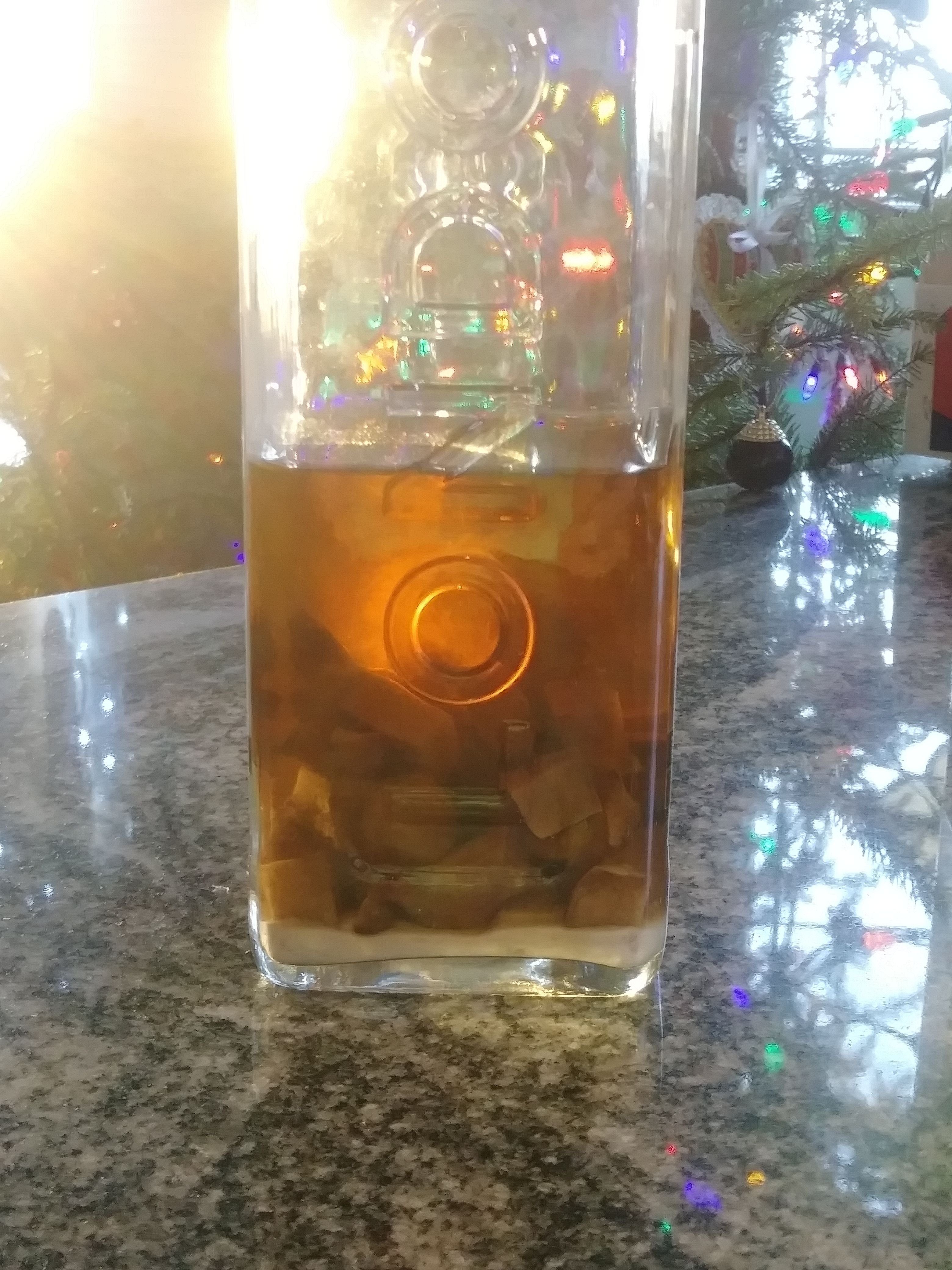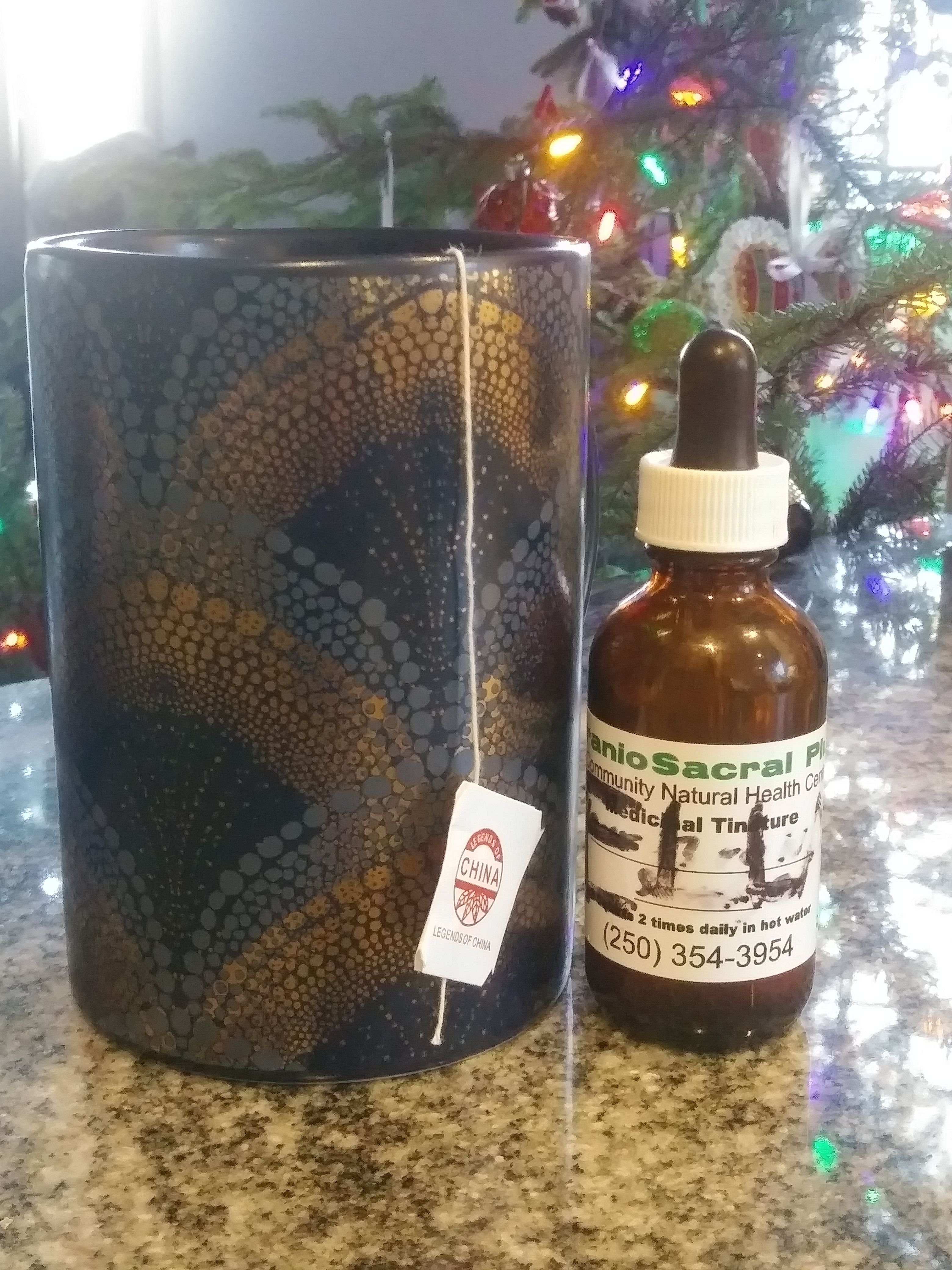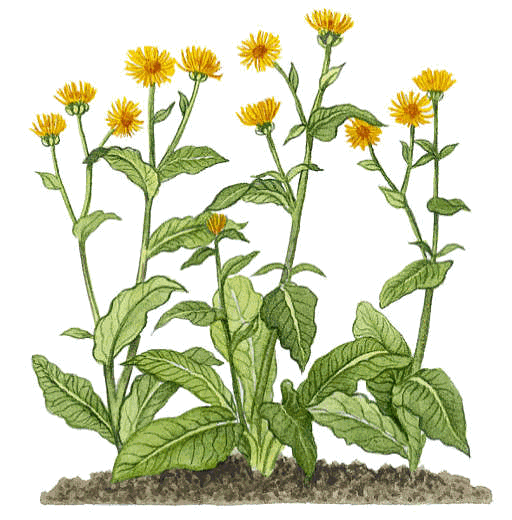
I've been waking up with a junky cough for a few days now, and so I'm reaching for my Elecampane tincture for support. My sister Jennie sent me home from BC a year ago with some roots, to be tinctured and planted. She had been sending me little bottles of tincture she had made but figured I should be making my own. So, now I've got Elecampane in my garden! Ele (for short) is a perrennial that likes partial shade and well watered soil, I hope the spot I picked will suit her. Pictures of her blooms in my garden to come! It'll be a few years before I start harvesting roots for tincture but I've got a fair amount prepared already.

Here I have the remains of my quart of Elecampne root tincture. I used gin as my base, the herbal flavor makes the tincture taste pretty lovely when mixed into a cup of tea.

I use a couple squirts from an eye dropper, about half a teaspoon, three or so times a day to loosen mucus and relax inflamed airways. The compounds helenin and inulin found in elecampane root are to thank for their lung soothing and cleansing abilities. Elecampane has been used for centuries in Traditional Chinese Medicine and Ayerveda, and even by ancient Greeks and Romans for ailments of the lungs.

Elecampane posesses antibacterial abilities and is even able to kill the "superbug" Methicillin resistant Staphylococcus aureus. While other compounds are killing the bad guys, Inulin, abundant in elecampane root, feeds healthy bacteria in the gut, while the bitterness of ele tincture assists digestion by stimulating bile production. A healthy gut full of good bacteria is necessary for a strong immune system.

The sun was setting at 4:22 today. But! The days are now going to get longer, and before I know it when I look out my livingroom window I will see Elecampane standing 5 ft tall, smiling at me.
(additional images from google images)
